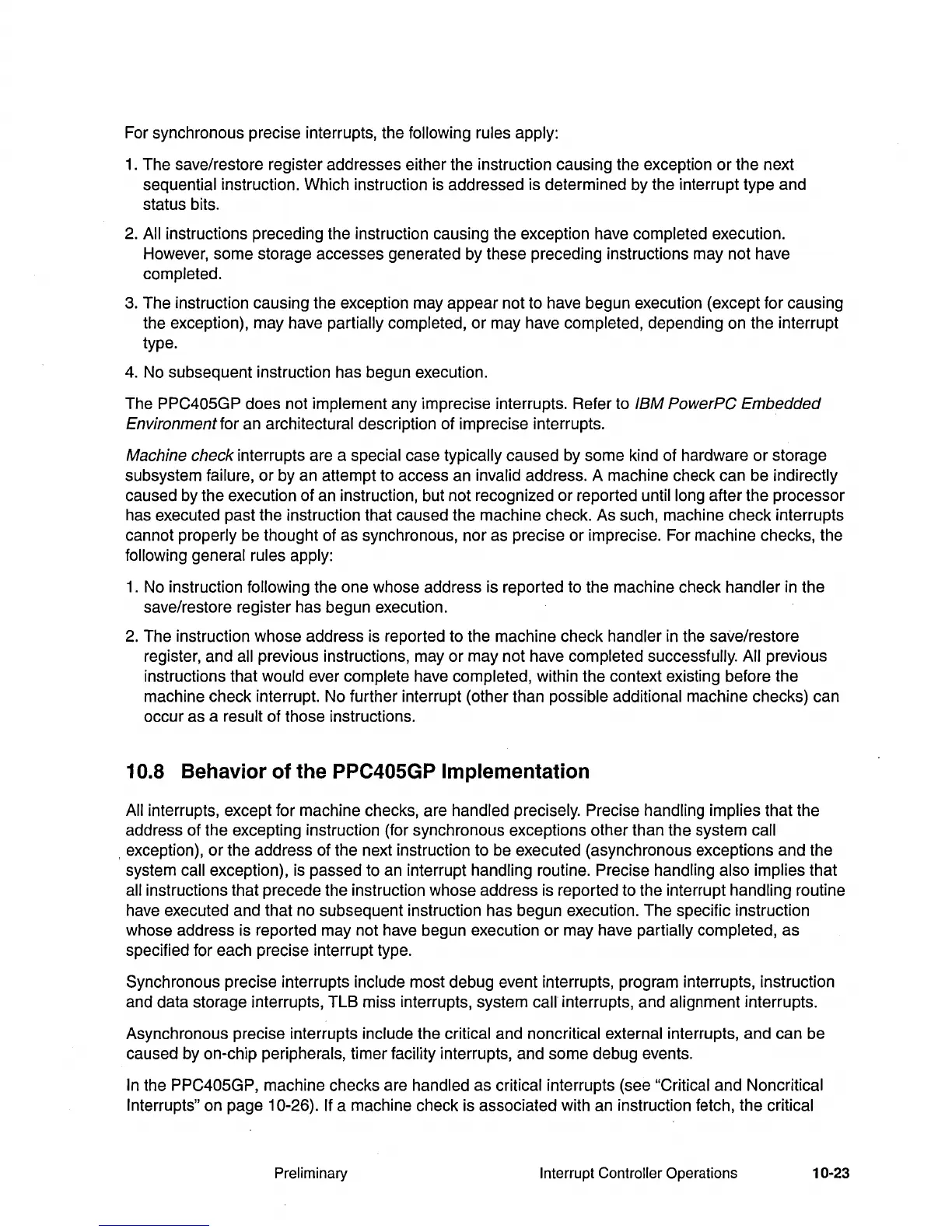For synchronous precise interrupts, the following rules apply:
1.
The save/restore register addresses either the instruction causing the exception
or
the next
sequential instruction. Which instruction is addressed is determined by the interrupt type and
status bits.
2.
All instructions preceding the instruction causing the exception have completed execution.
However, some storage accesses generated by these preceding instructions may not have
completed.
3.
The instruction causing the exception may appear not to have begun execution (except for causing
the exception), may have
partially completed,
or
may have completed, depending on the interrupt
type.
4.
No subsequent instruction has begun execution.
The
PPC405GP does not implement any imprecise interrupts. Refer to IBM PowerPC Embedded
Environment
for an architectural description of imprecise interrupts.
Machine check interrupts are a special case typically caused by some kind of hardware
or
storage
subsystem failure,
or
by an attempt to access an invalid address. A machine check can be indirectly
caused by the execution of an instruction, but not recognized
or
reported until long after the processor
has executed past the instruction that caused the machine check. As such, machine check interrupts
cannot
properly be thought of as synchronous, nor as precise or imprecise. For machine checks, the
following general rules apply:
1.
No instruction following the one whose address is reported to the machine check handler
in
the
save/restore register has begun execution.
2.
The instruction whose address is reported to the machine check handler
in
the save/restore
register, and
all previous instructions,
mayor
may not have completed successfully. All previous
instructions that
would ever complete have completed, within the context existing before the
machine check interrupt. No further interrupt (other than
possible additional machine checks) can
occur as a
result of those instructions.
10.8 Behavior of the PPC405GP Implementation
All interrupts, except for machine checks, are handled precisely. Precise handling implies that the
address of the excepting instruction (for synchronous exceptions other than the system
call
,
exception),
or
the address of the next instruction to be executed (asynchronous exceptions and the
system
call exception),
is
passed to an interrupt handling routine. Precise handling also implies that
all instructions that precede the instruction whose address is reported to the interrupt handling routine
have executed and that no subsequent instruction has begun execution. The specific instruction
whose address is reported may not have begun execution
or
may have partially completed, as
specified for each precise interrupt type.
Synchronous precise interrupts
include most debug event interrupts, program interrupts, instruction
and data storage interrupts,
TLB
miss interrupts, system call interrupts, and alignment interrupts.
Asynchronous precise interrupts include the
critical and noncritical external interrupts, and can be
caused by on-chip
peripherals, timer facility interrupts, and some debug events.
In the PPC405GP, machine checks are handled as critical interrupts (see "Critical and Noncritical
Interrupts"
on page 10-26). If a machine check is associated with an instruction fetch, the critical
Preliminary Interrupt Controller Operations
10-23

